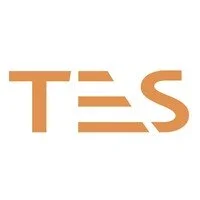PC Protection Controller
Initial
Course Summary
This course is designed to train persons who have been nominated by their line manager/sponsor to enable them to attain the Protection Controller competence.
A Protection Controller must be appointed when a line blockage is required to be taken and shared by two or more COSSs or IWAs.
The PC course will take delegates through the procedures as set out in Handbook 8 of the Rule Book, as well as highlighting the importance of using the correct communication protocols and adopting the appropriate behaviours to be able to carry out this role safely and effectively
Course Aim
The aim of the course is to provide delegates with the skills and underpinning knowledge required to undertake Protection Controller duties in line with the Protection Controller unit of competence.
Pre-requisites & Requirements
Delegates must:
Minimum age of 18.
Must hold a valid Sentinel Track Safety Card endorsed with PTS and COSS. COSS must not be in Probationary status (P)
Additional Information
On first attending, candidates have to complete a workbook. Failure to complete this satisfactorily means they cannot continue with the course. Following successful completion of the PC Initial training, PC should be assessed at the Interim COSS Workplace assessment. It is the responsibility of the sponsor to notify Intertrain that PC is to be assessed. NB: The PC can only be recertified within a COSS Recertification course and cannot be undertaken stand alone.
All PPE must meet the requirements of NR/L2/OHS/21 and RIS-3279-TOM and as a minimum be equipped with:-
High visibility upper body clothing with reflective tape, with Sentinel Sponsor Logo
High visibility lower body clothing with reflective tape
A safety helmet with Sentinel Sponsor Logo
Safety footwear to support ankle and protective toe cap
Suitable safety eyewear
Suitable safety gloves
What Does a Protection Controller Do?
The Protection Controller (PC) is a senior and highly responsible operational role that manages train movements and ensures safety on specific sections of the railway network where normal signalling is not in use or during major engineering works. They are crucial for orchestrating the safe flow of on-track plant, engineering trains, and sometimes even passenger trains through large work sites or isolated sections of line.
What is a Protection Controller?
A Protection Controller is a formally appointed and highly skilled individual responsible for the operational safety of a defined area of line, often within a large engineering possession or during significant infrastructure projects. Unlike a Signaller who controls movements via fixed signals, the PC often controls movements on un-signalled lines or within possessions using direct radio communication with train/plant operators and managing physical protection arrangements. They ensure that all rail traffic within their controlled area moves safely and according to the agreed plan.
Key Duties and Responsibilities of a Protection Controller:
The PC's role demands exceptional organisational skills, a deep understanding of railway operations, critical decision-making abilities, and unwavering attention to safety. Their duties typically include:
Managing Train/Plant Movements: Directing the movement of engineering trains, road-rail vehicles, and other on-track plant within their designated area of control. This involves issuing precise instructions for speed, direction, and stopping points.
Controlling the Limits of the Possession/Worksite: Ensuring all rail traffic respects the defined boundaries of the possession or work area.
Communication Hub: Acting as the central point of communication for all rail-mounted assets and relevant personnel within their controlled zone, including COSS teams, machine operators, and sometimes Signallers outside their area.
Implementing Protection Arrangements: Overseeing or verifying the placement of physical protection (e.g., detonators, handsignallers, fixed signals if applicable) to secure the work area from unauthorised rail movements.
Incident Management: Responding effectively to any operational incidents or emergencies within their controlled area, coordinating with relevant parties to resolve issues safely.
Record Keeping: Maintaining accurate, real-time records of all train/plant movements and significant events within their area of control.
Briefing & Debriefing: Providing clear and concise operational briefings to all relevant personnel entering or operating within their control area.
Working to Plan: Ensuring all movements and operations adhere to the agreed Work Package Plan and Safe System of Work.
Where a Protection Controller can work within TES:
The PC competency is absolutely vital for TES's successful execution of major rail infrastructure projects, particularly those involving large-scale track possessions and complex logistics:
Possession Management: A core role within the Possession Management department, managing complex possessions where multiple work fronts and on-track machines are operating simultaneously.
Permanent Way (P-Way): Essential for major track renewal or remodelling projects where large volumes of material and plant need to be moved efficiently and safely within the work zone.
Electrification (OLE / 3rd Rail): Managing the movement of specialised OLE plant and trains within newly electrified or re-engineered areas.
Project Delivery Teams: Integral to the operational planning and delivery of any large, complex rail project requiring dedicated control of rail traffic.
Operations Management: Senior PCs may progress into roles overseeing wider operational planning and execution.
Let’s Learn Together
Interested in our NSAR Gold Standard team training your staff?
Fill out some info and we will be in touch shortly!
We can't wait to hear from you!
Explore more of TES
Want to explore more of what TES have to offer? Use the search function below

